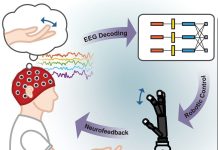
A team of neuroscientists and physiologists at the University of Cambridge and elsewhere has made a significant discovery regarding the brain’s response to fatty foods.
Their research, published in The Journal of Neuroscience, utilized MRI scans to identify specific brain regions involved in reacting to varying levels of fat content in food.
This groundbreaking study has the potential to shed light on the factors contributing to the preference for fatty foods and may eventually lead to therapies aimed at reducing such preferences, potentially addressing the obesity epidemic in Western countries.
Understanding the Attraction to Fatty Foods
Prior research has indicated that a preference for fatty foods plays a role in the obesity epidemic prevalent in Western societies.
The Cambridge team aimed to pinpoint the brain regions responsible for this preference, with the hope of developing interventions to reduce individuals’ responses to fatty foods.
One key aspect of fatty foods, like ice cream, is their texture, which is influenced by their fat content. People respond not only to the taste of such foods but also to the physical sensations experienced while consuming them.
To identify the brain regions responsible for these reactions, the researchers conducted a series of experiments.
The first step involved creating several milkshakes with varying levels of fat content. Using extracted pig tongues, the researchers measured the friction generated when each milkshake was licked.
Twenty-two human volunteers were then asked to sample the milkshakes while undergoing MRI scans of their brains.
After each taste, the volunteers estimated the amount they would be willing to pay for a full glass of the milkshake, serving as an indicator of their preference for the samples.
Key Findings
Analysis of the brain scans revealed that the orbitofrontal cortex (OFC) exhibited increased activity when the volunteers were taste-testing.
Importantly, the degree of activation in the OFC correlated with the amount each volunteer was willing to pay for a particular milkshake after tasting it. This finding suggests that the OFC plays a pivotal role in processing the appeal of fatty foods.
To further validate their results, the researchers invited the volunteers to a meal featuring curry dishes with varying fat content.
Those participants whose OFCs exhibited the greatest activity tended to consume more of the curry dishes with higher fat content, reinforcing the connection between the OFC’s response and food preferences.
The study’s groundbreaking findings have provided valuable insights into the brain’s response to fatty foods.
By identifying the OFC as a key player in processing the appeal of such foods, this research opens the door to potential interventions targeting this brain region to reduce the attraction to fatty foods.
Ultimately, this work may contribute to addressing the obesity epidemic by helping individuals make healthier dietary choices.
If you care about blood pressure, please read studies about how diets could help lower high blood pressure, and 3 grams of omega-3s a day keep high blood pressure at bay.
For more information about nutrition, please see recent studies about how tea and coffee influence your risk of high blood pressure, and results showing this olive oil could reduce blood pressure in healthy people.
The research findings can be found in The Journal of Neuroscience.
Copyright © 2024 Knowridge Science Report. All rights reserved.



